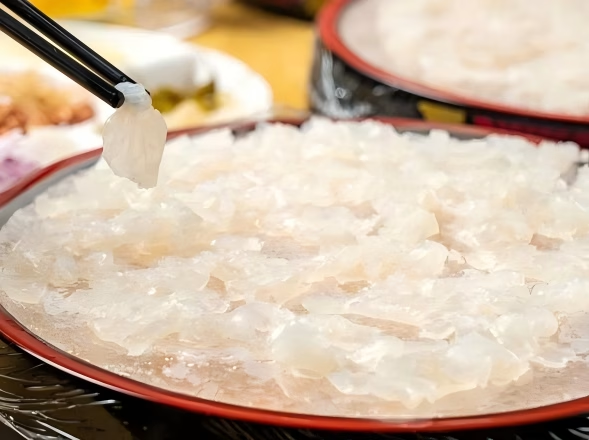The meat we commonly eat can be roughly divided into two categories: white meat and red meat. When cooking, you may notice that white meat, such as fish, cooks faster than red meat. Why does white meat cook faster than red meat? How does the texture and taste of white meat like fish differ from red meat like pork or beef?
Why does white meat cook faster than red meat?
Is it because of color? Just like wine, meat can come in white or red colors. Beef is red meat, while fish and shellfish are typically white. Salmon is red—or rosy—because it feeds on crustaceans with pink shells. In case you’re wondering, flamingos are pink for a similar reason.
In the kitchen, we quickly learn that white fish cooks much faster than red meat. The reason isn’t just the color; the natural structure of fish meat is different from that of most birds and animals.
Reason1
First, swimming through water isn’t much of a muscle-building exercise, at least not compared to sprinting across open fields or soaring through the air. Therefore, fish muscles aren’t as robust as those of other animals.
For example, more active fish like tuna have more red muscle, which contains more myoglobin, resulting in a darker flesh.
More importantly, fish muscle tissue is fundamentally different from that of most land animals. To sprint away from prey at high speed, fish require quick, short bursts of high power, rather than the long-distance endurance required of land animals—or the endurance some animals needed before they were domesticated.
Reason2
Muscles are generally composed of fibers, and fish muscles are predominantly fast-twitch fibers. These fibers are shorter and thinner than the slow-twitch fibers of most land animals. This makes them easier to chew and tear apart, and more susceptible to the heat and chemical breakdown of cooking. This is why we can eat fish sashimi, but raw beef must be minced tartar-style for human molars to handle.
Another major reason fish are more tender than other animal meat is that fish live in a largely weightless environment, so they don’t need connective tissue—the cartilage, tendons, and ligaments that other animals use to hold their body parts together against gravity and attach to their skeletons.
As a result, fish are mostly muscle, with very little cartilage or anything hard to chew, and their skeletons are little more than a simple spine. Fish’s relative lack of connective tissue means relatively little gelatin, the gelatin that transforms into a delicious, juicy texture when heated. This is one reason fish tend to be drier than many other meats after cooking.
Reason3
Another reason is that cold-blooded animals don’t need as much heat-retaining fat, which contributes to juiciness. For these reasons, the main challenge in cooking fish is avoiding overheating. Fish should be cooked until the proteins lose their translucency and begin to appear opaque, just like the proteins in egg whites.
If fish is cooked for too long, the muscle fibers contract, causing the meat to shorten and toughen. At the same time, the tissue dries out due to the loss of too much water—making the fish dry and tough. A simple rule of thumb is to cook the fish for eight to ten minutes per inch of thickness.


Leave a Reply